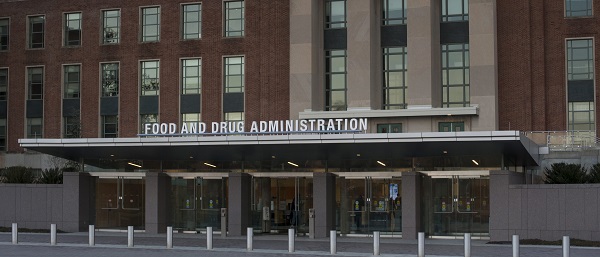Uncategorized
Firefighters search mud after Brazil dam collapse; 58 dead

BRUMADINHO, Brazil — Firefighters on Monday carefully moved over treacherous mud, sometimes walking, sometimes crawling, in search of survivors or bodies, four days after a dam collapse that buried mine buildings and surrounding
The confirmed death toll rose to 58, with up to 300 people still missing, authorities said. In an ominous sign, nobody was recovered alive Sunday, a stark difference from the first two days of the disaster, when helicopters were whisking people from the mud.
The slow speed of search efforts was due to the treacherous sea of reddish-brown mud that surged out when the mine dam breached Friday afternoon. It is up 24 feet (8
Firefighting officials said Monday they had identified a bus believed to be filled with bodies and had worked through the night trying to get through the mud.
Flavio Godinho, a spokesman with the civil
Rescue efforts were suspended about 10 hours Sunday because of fears that a second mine dam in the southeastern city of Brumadinho was at risk of failing. An estimated 24,000 people were told to get to higher ground, but by afternoon civil engineers said the second dam was no longer at risk.
Areas of water-soaked mud appeared to be drying out, which could help firefighters get to areas previously unreachable. Still, it was slow going for the search teams, and residents were on edge.
“Get out searching!” a woman yelled at firefighters near a refuge set up in the
Brazilian searchers were poised to get reinforcements on Monday, when more than 100 Israeli soldiers and other personnel were set to join the efforts.
Throughout the weekend, there was mounting anger at the giant Vale mining company, which operated the mine, and questions rose about an apparent lack of an alarm system Friday.
Caroline Steifeld said she heard warning sirens Sunday, but there was no alert when the dam collapsed Friday.
“I only heard shouting, people saying to get out. I had to run with my family to get to higher ground, but there was no siren,” she said, adding that a cousin was still unaccounted for.
In an email, Vale told The Associated Press that the area has eight sirens, but “the speed in which the event happened made sounding an alarm impossible” when the dam burst.
People in Brumadinho desperately awaited word on their loved ones. Romeu Zema, the governor of Minas Gerais state, said that by now most recovery efforts would entail pulling out bodies.
The flow of waste reached the nearby community of Vila Ferteco and an occupied Vale administrative office. It buried buildings to their rooftops and an extensive field of the mud cut off roads.
Some residents barely escaped with their lives.
“I saw all the mud coming down the hill, snapping the trees as it descended. It was a tremendous noise,” said a tearful Simone Pedrosa, from the
For many, hope was evaporating.
“I don’t think he is alive,” Joao Bosco said of his cousin Jorge Luis Ferreira, who worked for Vale. “Right now, I can only hope for a miracle.”
The carpet of mining waste also raised fears of widespread environmental contamination and degradation.
According to Vale’s
Over the weekend, courts froze about $3 billion from Vale assets for state emergency services and told the company to report on how they would help the victims.
Neither the company nor authorities had reported why the dam failed, but Attorney General Raquel Dodge promised to investigate. “Someone is definitely at fault, she said.”
Dodge noted there are 600 mines in Minas Gerais alone that are classified as being at risk of rupture.
Another dam administered by Vale and Australian mining company BHP Billiton collapsed in 2015 in the city of Mariana in Minas Gerais, resulting in 19 deaths and forcing hundreds from their homes.
Considered the worst environmental disaster in Brazilian history, that disaster left 250,000 people without drinking water and killed thousands of fish. An estimated 60 million cubic meters of waste flooded nearby rivers and eventually flowed into the Atlantic Ocean.
Sueli de Oliveira Costa, who hadn’t heard from her husband since Friday, had harsh words for the mining company.
“Vale destroyed Mariana and now they’ve destroyed Brumadinho,” she said.
Other residents quietly noted that Vale was the main employer in the area.
“The company is responsible for a new tragedy, but it’s the principal employer,” said Diego Aparecido, who has missing friends who worked at Vale. “What will happen if it closes?”
Environmental groups and activists said the latest spill underscored the lack of environmental regulation in Brazil, and many promised to fight any further deregulation.
Marina Silva, a former environmental minister and presidential candidate, toured the area Sunday. She said Congress should bear part of the blame for not toughening regulations and enforcement.
“All the warnings have been given. We are repeating history with this tragedy,” she told the AP. “Brazil can’t become a specialist in rescuing victims and consoling widows. Measures need to be taken to avoid prevent this from happening again.”
___
Associated Press writer Marcelo Silva de Sousa reported this story in Brumadinho and AP writer Peter Prengaman reported from Arraial do Cabo, Brazil. AP photographer Leo Correa in Brumadinho contributed to this report.
Marcelo Silva De Sousa And Peter Prengaman, The Associated Press
Uncategorized
Cost of bureaucracy balloons 80 per cent in 10 years: Public Accounts

The cost of the bureaucracy increased by $6 billion last year, according to newly released numbers in Public Accounts disclosures. The Canadian Taxpayers Federation is calling on Prime Minister Mark Carney to immediately shrink the bureaucracy.
“The Public Accounts show the cost of the federal bureaucracy is out of control,” said Franco Terrazzano, CTF Federal Director. “Tinkering around the edges won’t cut it, Carney needs to take urgent action to shrink the bloated federal bureaucracy.”
The federal bureaucracy cost taxpayers $71.4 billion in 2024-25, according to the Public Accounts. The cost of the federal bureaucracy increased by $6 billion, or more than nine per cent, over the last year.
The federal bureaucracy cost taxpayers $39.6 billion in 2015-16, according to the Public Accounts. That means the cost of the federal bureaucracy increased 80 per cent over the last 10 years. The government added 99,000 extra bureaucrats between 2015-16 and 2024-25.
Half of Canadians say federal services have gotten worse since 2016, despite the massive increase in the federal bureaucracy, according to a Leger poll.
Not only has the size of the bureaucracy increased, the cost of consultants, contractors and outsourcing has increased as well. The government spent $23.1 billion on “professional and special services” last year, according to the Public Accounts. That’s an 11 per cent increase over the previous year. The government’s spending on professional and special services more than doubled since 2015-16.
“Taxpayers should not be paying way more for in-house government bureaucrats and way more for outside help,” Terrazzano said. “Mere promises to find minor savings in the federal bureaucracy won’t fix Canada’s finances.
“Taxpayers need Carney to take urgent action and significantly cut the number of bureaucrats now.”
Table: Cost of bureaucracy and professional and special services, Public Accounts
| Year | Bureaucracy | Professional and special services |
|
$71,369,677,000 |
$23,145,218,000 |
|
|
$65,326,643,000 |
$20,771,477,000 |
|
|
$56,467,851,000 |
$18,591,373,000 |
|
|
$60,676,243,000 |
$17,511,078,000 |
|
|
$52,984,272,000 |
$14,720,455,000 |
|
|
$46,349,166,000 |
$13,334,341,000 |
|
|
$46,131,628,000 |
$12,940,395,000 |
|
|
$45,262,821,000 |
$12,950,619,000 |
|
|
$38,909,594,000 |
$11,910,257,000 |
|
|
$39,616,656,000 |
$11,082,974,000 |
Uncategorized
Trump Admin Establishing Council To Make Buildings Beautiful Again


From the Daily Caller News Foundation
By Jason Hopkins
The Trump administration is creating a first-of-its-kind task force aimed at ushering in a new “Golden Age” of beautiful infrastructure across the U.S.
The Department of Transportation (DOT) will announce the establishment of the Beautifying Transportation Infrastructure Council (BTIC) on Thursday, the Daily Caller News Foundation exclusively learned. The BTIC seeks to advise Transportation Secretary Sean Duffy on design and policy ideas for key infrastructure projects, including highways, bridges and transit hubs.
“What happened to our country’s proud tradition of building great, big, beautiful things?” Duffy said in a statement shared with the DCNF. “It’s time the design for America’s latest infrastructure projects reflects our nation’s strength, pride, and promise.”
“We’re engaging the best and brightest minds in architectural design and engineering to make beautiful structures that move you and bring about a new Golden Age of Transportation,” Duffy continued.
Mini scoop – here is the DOT’s rollout of its Beautifying Transportation Infrastructure Council, which will be tasked with making our buildings beautiful again. pic.twitter.com/
9iV2xSxdJM — Jason Hopkins (@jasonhopkinsdc) October 23, 2025
The DOT is encouraging nominations of the country’s best architects, urban planners, artists and others to serve on the council, according to the department. While ensuring that efficiency and safety remain a top priority, the BTIC will provide guidance on projects that “enhance” public areas and develop aesthetic performance metrics.
The new council aligns with an executive order signed by President Donald Trump in August 2025 regarding infrastructure. The “Making Federal Architecture Beautiful Again” order calls for federal public buildings in the country to “respect regional architectural heritage” and aims to prevent federal construction projects from using modernist and brutalist architecture styles, instead returning to a classical style.
“The Founders, in line with great societies before them, attached great importance to Federal civic architecture,” Trump’s order stated. “They wanted America’s public buildings to inspire the American people and encourage civic virtue.”
“President George Washington and Secretary of State Thomas Jefferson consciously modeled the most important buildings in Washington, D.C., on the classical architecture of ancient Athens and Rome,” the order continued. “Because of their proven ability to meet these requirements, classical and traditional architecture are preferred modes of architectural design.”
The DOT invested millions in major infrastructure projects since Trump’s return to the White House. Duffy announced in August a $43 million transformation initiative of the New York Penn Station in New York City and in September unveiledmajor progress in the rehabilitation and modernization of Washington Union Station in Washington, D.C.
The BTIC will comprise up to 11 members who will serve two-year terms, with the chance to be reappointed, according to the DOT. The task force will meet biannually. The deadline for nominations will end Nov. 21.
-

 Business1 day ago
Business1 day agoGeopolitics no longer drives oil prices the way it used to
-

 Business1 day ago
Business1 day agoArgentina’s Milei delivers results free-market critics said wouldn’t work
-

 Alberta2 days ago
Alberta2 days agoAlberta’s new diagnostic policy appears to meet standard for Canada Health Act compliance
-

 Health2 days ago
Health2 days agoRFK Jr reversing Biden-era policies on gender transition care for minors
-

 Censorship Industrial Complex2 days ago
Censorship Industrial Complex2 days agoCanadian university censors free speech advocate who spoke out against Indigenous ‘mass grave’ hoax
-

 Business1 day ago
Business1 day agoDeadlocked Jury Zeroes In on Alleged US$40 Million PPE Fraud in Linda Sun PRC Influence Case
-

 COVID-192 days ago
COVID-192 days agoFreedom Convoy protester appeals after judge dismissed challenge to frozen bank accounts
-

 Daily Caller2 days ago
Daily Caller2 days agoEx-FDA Commissioners Against Higher Vaccine Standards Took $6 Million From COVID Vaccine Makers










